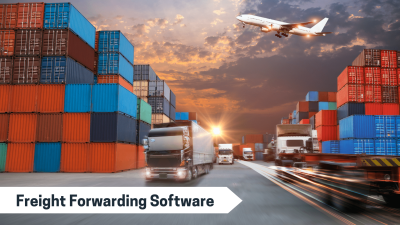The world is undergoing a digital change, particularly in the freight forwarding solutions and logistics sector. Although technology is working to unify this highly fragmented sector, ineffective rate management remains a significant obstacle for freight forwarding software.
A freight management system sales executive spends about 43% of their time on pricing and bids. Uncontrolled pricing, sluggish quotations, and manual entry frequently result in process errors, which cost time, money, and resources. Freight management software makes this easier.
The freight sector is ruled by astronomical transportation costs. Due to the unstable nature of the shipping sector, prices have quadrupled in the market.
1. What then drives this fluctuation in shipping rates?
2. What caused the sudden quadrupling of shipping costs?
3. Why do experts anticipate that these shipping costs could rise by a factor of ten?
Here is all the information you require regarding freight forwarding software with BoxOn Logistics.
Pricing Increases for Container Shipping Currently:
Shipping Rates have cyclical highs and lows. The length of a cycle and the extreme constraints that it would impose, however, are difficult to determine. Container shipping costs from China to the United States reached a dramatic peak in the first week of August 2021, reaching about USD 20,000 per 40-foot box. In fact, the price has increased by more than 500% in the past year. In the final week of July 2021, the prices were slightly below USD 11,000 as a point of comparison. Just as the US shopping season is about to begin, prices have risen.
Higher demand than anticipated puts a strain on the world’s freight management system networks. When weighed against the supply opportunities, the methods to meet this higher demand appear minor. Currently, there is a significant discrepancy between the existing supply and the anticipated demand due to the seller-centric nature of the market.
The worldwide freight forwarding solutions industry’s current elevated rates will last at least throughout the year. It is anticipated that the market will continue to appear unstable until 2023. In a market where sellers are in control, it makes sense that shippers would choose the routes that will provide them with the highest profits. They would adjust their schedules to accommodate charters and cut back on traffic on routes where they lose money.
Standard factors influence the fluctuating shipping rates:
The expected demand and the available supply of an item, as in every market, determine the rates. Throughout the network of the freight management software, every activity has an effect. The absence of cargo ships causes more unmet demand, which raises prices. Decreased global manufacturing lowers demand and lowers transportation costs. Less expensive shipping is the outcome of abrupt drops in e-commerce shipping. Unexpected changes to the route will probably increase the shipping costs of freight forwarding software.
We can recognize a crucial idea: shipping charges reflect consumer and investor emotions in the freight management system. It personifies the essence of every major development. From May to November, when American shopping is at its busiest, prices typically stay on the upper side. During these six months, carriers automatically tack on peak season fees and an overall rate rise.
Another aspect is when the carrier is obliged to raise prices due to rising terminal costs. This particularly occurs when there are strikes by labor unions, political unrest, traffic jams, or when US Rail prices rise for related causes. Carriers seize this opportunity right away to tack on new surcharges.
Up to 50–60% of all ship operational expenses are related to fuel. Typically, as, and when oil prices rise or fall, the floating cost of fuel has a linear impact on shipping expenses. And last, compared to long-term contracts, short-term rate cards and Mini-Bids are more popular nowadays. As a result, when shippers ask carriers for bids, “bidding fatigue” develops. Researchers have noted a decline in response rates from about 90% to just about 50%.
The Reaction to Shipping Rates Caused by the Pandemic:
The most blatant cause of these interruptions in recent times can be attributed to the pandemic’s effects on the balance between supply and demand. It has produced a vicious circle in which the causes and results of one action produce recurrent spirals that are dependent upon one another. According to statistics, 94% of Fortune 1000 organizations experienced freight forwarding solutions disruptions because of COVID-19, and 75% of these enterprises think the coronavirus outbreak had a detrimental impact on their operations.
Reduced labor and ongoing, variable-degree limitations have influenced the world economy over the previous 18 months. While businesses attempted to prepare and re-forecast for the future, there was initially a brief slowdown in the freight management software industry during the pandemic.
BoxOn Logistics will help you in managing volatile freight rates and capacity constraints.
Conclusion:
Strangely, the ships and containers that are currently sitting in shipping terminals and manufacturing outposts are just raising prices. It has also sparked discussion about how the entire world’s shipping requirements are reliant on a single place. However, the abrupt increase in transportation costs has once again sent the freight industry reeling and forced it to re-evaluate its projections and strategies.
Schedule a demo with BoxOn Logistics to learn more about shipping costs and capacity restrictions in freight forwarding software. To know more https://www.boxonlogistics.com/request-demo/






COMMENTS